
Frans Hals the Elder was a Dutch Golden Age painter, chiefly of individual and group portraits and of genre works, who lived and worked in Haarlem.

Judith Jans Leyster was a Dutch Golden Age painter of genre works, portraits, and still lifes. Her work was highly regarded by her contemporaries, but largely forgotten after her death. Her entire oeuvre came to be attributed to Frans Hals or to her husband, Jan Miense Molenaer. In 1893, she was rediscovered and scholars began to attribute her works properly.

The Proposition is a genre painting of 1631 by Judith Leyster, now in the Mauritshuis in The Hague, who title it Man offering money to a young woman. It depicts a woman, sewing by candlelight, as a man leans over her, touching her right shoulder with his left hand. He is offering her coins in his right hand, but she is apparently ignoring the offer and concentrating intently upon her sewing. As we see the female protagonist (seemingly) ignore the advances of her suitor, this painting has been considered to potentially be a feminist work.

The Lute Player is an oil-on-canvas painting from 1623 or 1624 now in the Louvre by the Haarlem painter Frans Hals, showing a smiling actor wearing a jester's costume and playing a lute.

Two Laughing Boys with a Mug of Beer is an oil-on-canvas painting by Frans Hals, created c. 1626, showing a Kannekijker (mug-looker). Someone looking into a mug refers to an old Dutch word for a glutton, greedy for more. This visual theme was also used to depict sight as one of the five senses, and various people have argued about whether this portrait was meant as one in a series of the five senses along with Two Boys singing for hearing and a variant version of The Smoker for smell:
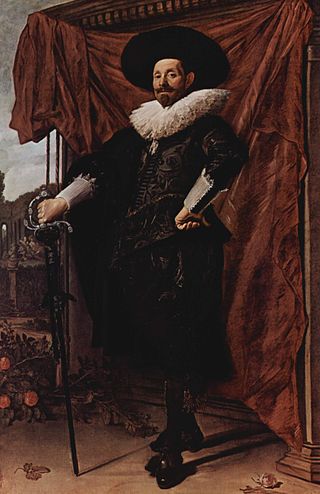
Willem van Heythuysen posing with a sword is an oil-on-canvas painting by the Dutch Golden Age painter Frans Hals, painted in 1625-1630, and now in the Alte Pinakothek, in Munich. It shows the Haarlem cloth merchant Willem van Heythuysen in a theatrical pose with a rapier.

Boy with a Glass and a Lute is an oil-on-canvas painting by the Dutch Golden Age painter Frans Hals, painted in 1626 and now in the Guildhall Art Gallery, London.
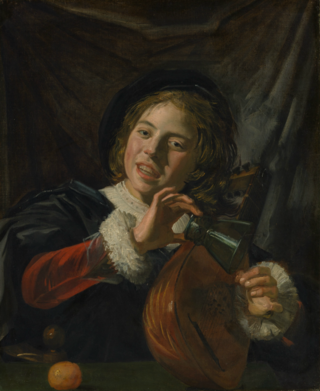
The Fingernail Test is an oil-on-canvas Dutch Golden Age painting that has been attributed to either Frans Hals or Judith Leyster, painted in 1626 and now in the Metropolitan Museum of Art, New York City.

Self-portrait by Judith Leyster is a Dutch Golden Age painting in oils now in the collection of the National Gallery of Art in Washington DC. It was offered in 1633 as a masterpiece to the Haarlem Guild of St. Luke. It was attributed for centuries to Frans Hals and was only properly attributed to Judith Leyster upon acquisition by the museum in 1949. The style is indeed comparable to that of Hals, Haarlem's most famous portraitist.

The Serenade is a 1629 oil painting by Judith Leyster in the collection of the Rijksmuseum. It was attributed for centuries to Frans Hals until Wilhelm von Bode saw it in the Six collection in 1883. He noticed the prominent "J" in the signature, and attributed it to Jan Hals. This is one of seven paintings first properly attributed to Leyster by Hofstede de Groot ten years later in 1893.

The Merry Trio is an oil painting by Judith Leyster in a private collection. It was considered a work by Frans Hals until 1903.

The Last Drop is a c. 1629 oil painting by Judith Leyster in the John G. Johnson collection of the Philadelphia Museum of Art. It was regarded as a work by Frans Hals until 1903, when it was noticed that it is signed 'JL*' on the tankard.

A Youth with a Jug is a 1633 oil painting by Judith Leyster currently in a private collection.
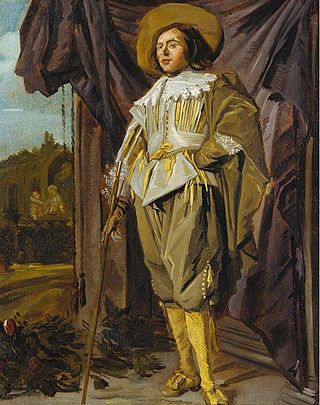
Standing Cavalier is a painting by Judith Leyster in the Royal Collection. It is the only painting by Leyster with a provenance that reaches back to the 18th-century.

Young man playing the lute is an oil painting by Judith Leyster in the collection of the Rijksmuseum, and is a period copy of the same subject by Frans Hals. It was acquired by the museum as a painting by Frans Hals and was skipped by the researcher Juliane Harms in 1927, being finally attributed to Leyster by Seymour Slive in 1974.
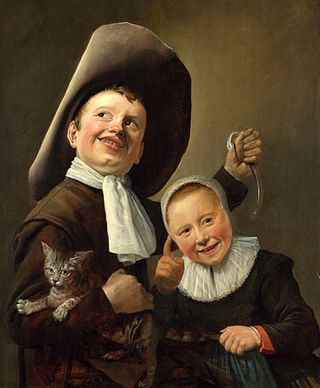
A Boy and a Girl with a Cat and an Eel is a 1635 oil painting by Judith Leyster that is now in the National Gallery, London.

A Game of Tric-Trac is a painting by Judith Leyster from 1630.

Still life with flowers on a marble slab is a 1716 floral painting by Rachel Ruysch. It is in the collection of the Rijksmuseum, in Amsterdam.
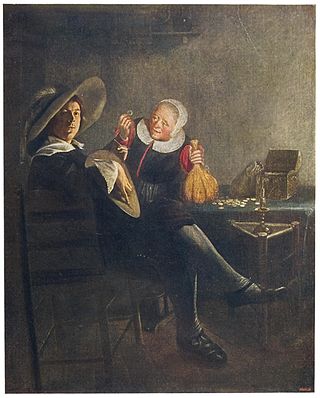
Unequal Love is a painting made in about 1631 by the Dutch Golden Age painter Judith Leyster. It is in the collection of the Galleria Nazionale d'Arte Antica, Rome.




















